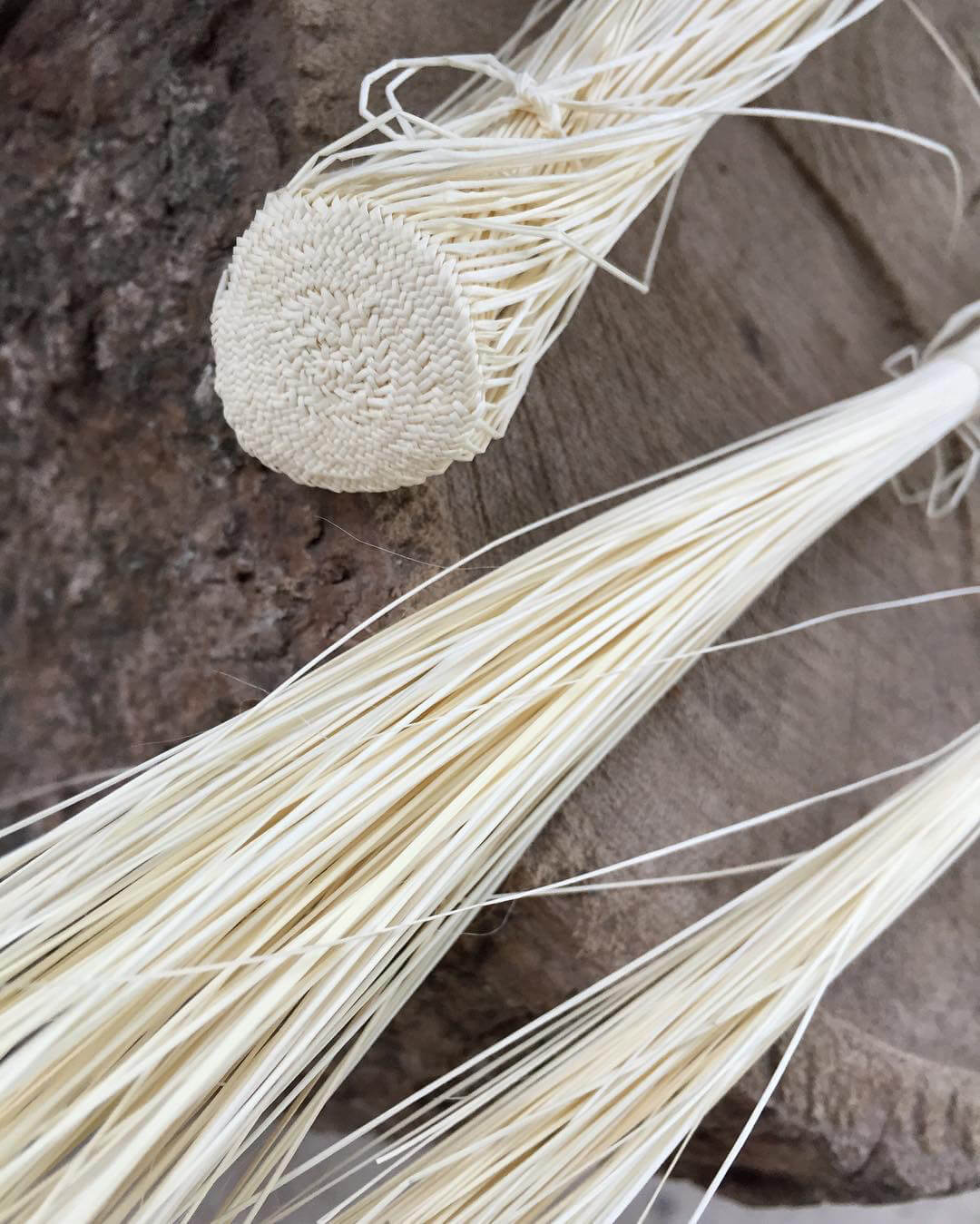How a Montecristi Hat is made
This’s how a Montecristi hat is made
- The “Crab”
- The “Plantilla”
- Crown & Brim
- Double Locking Point
- “Despeluzado”
- “Azocado”
- Steaming & Beating
- Tumbar “The Brim”
- Blocking & Pressing
- Customization
This technique of weaving, native and exclusive from Pile, is the only one that allows to get toquilla straw hats, with more than 60 points per linear inch, which is the supreme quality in the extra fine hats world. The template, which is the circular part that covers the upper plane of the head, is up to 30 cm in diameter. The weaving begins with 8 straw strands chosen by Domingo Carranza, as a teacher chooses his best students. The fine toquilla straw hat is unbeatable, it is born in a unique and tiny point, that is the center of the figure that is denominated crab, and it is formed by the first interlaced of the 8 straws. Gradually, in each turn new strands are added exponentially, so that at the end of the hat has gone from 8 to more than 3,000 straws. It is important to emphasize that the template is the common origin of all hats, determines the grade of quality of the piece and can take up to 8 weeks of work.
Read full storyWhit the “crab” the Montecristi hat is born
The top of the hat is woven after transferring the template from the flat work table to a hard wood last, which will serve as a mold to weave the vertical plane of the toquilla straw hat, intended to cover the head. The weaving of the fine hats of Montecristi, is executed with the craftsman supporting the chest in a sort of tower, which configure the bench of weaving and the lasts, situating the weaving at the suitable height for the artisan. It is based on the logic of bringing the fabric closer to the eyes and never leaning it on the body, so as not to damage the very fine fibers. This particular disposition has passed through hundreds of years from one generation to the next. It can be woven in the traditional way or in a technique called “crochet” that allows to give a fretworked finish, which makes it cooler and appropriate for very hot areas. A top can measure from 9 to 15 centimeters depending on the model.
In short, the grade of quality of a hat is determined by measuring in two different places on the top, observing how many times the straws are interlaced in a linear inch. This part of a high quality hat can take Domingo Carranza up to 12 weeks of work.



